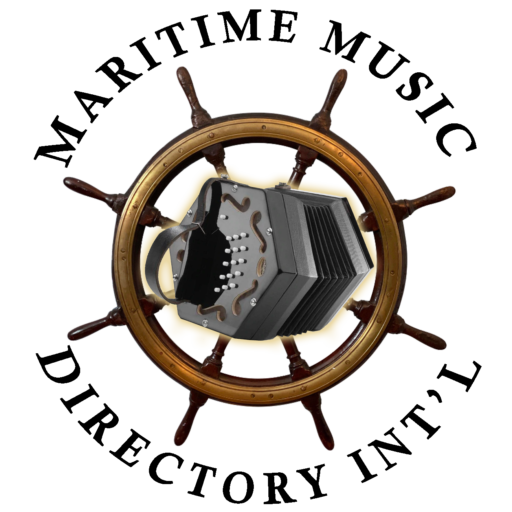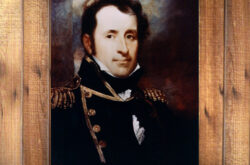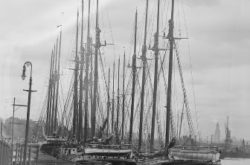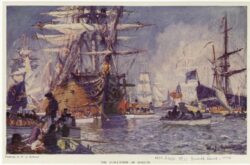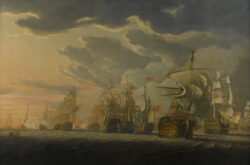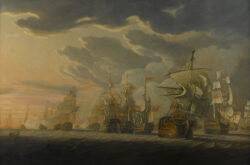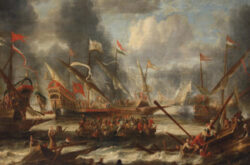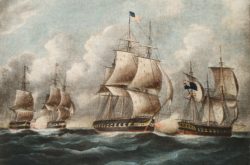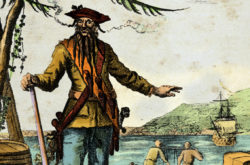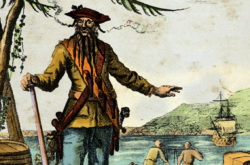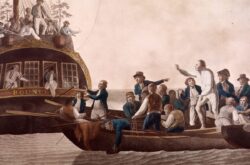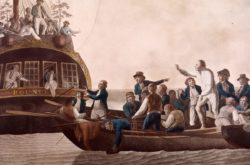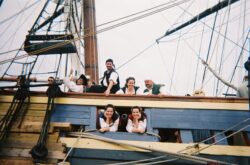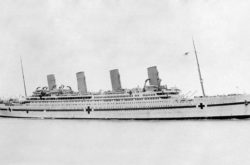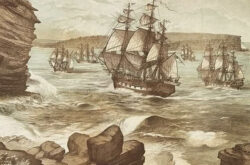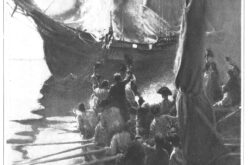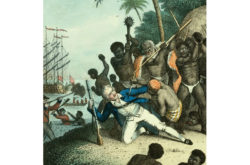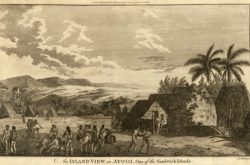“The most daring act of the age” (1804)
U.S. Navy stages daring mission during First Barbary War (February 16, 1804)
During the First Barbary War, U.S. Lieutenant Stephen Decatur leads a military mission . . .
American Naval Hero Killed in Duel (1820)
U.S. Navy officer Stephen Decatur, hero of the Barbary . . .
American schooner Lyman M. Law is sunk (1917)
The Austrian submarine U-35 bombs and sinks the American schooner Lyman M. Law in the Mediterranean Sea off the coast of Cagliari, Sardinia. The Lyman M. Law, captained . . .
Battle of Boston Harbor (1 June 1813)
USS Chesapeake versus HMS Shannon happened on June 1st 1813 in Boston Harbor and is referred to as the Battle of Boston Harbor.
At Boston, Captain James Lawrence took command . . .
Battle of Cape St. Vincent (14 Feb 1797)
The Battle of Cape St. Vincent (14 February 1797) was one of the opening battles of the Anglo-Spanish War (1796–1808), as part of the French Revolutionary Wars, where . . .
Battle of Cape St. Vincent (1797)
The Battle of Cape St. Vincent (14 February 1797) was one of the opening battles of the Anglo-Spanish War (1796–1808), as part of the French Revolutionary Wars, where a British fleet under Admiral . . .
Battle of Dover, 29 May 1652
The naval Battle of Dover (also known as the Battle of Goodwin Sands), fought on 29 May 1652 was the first engagement of the First Anglo-Dutch War between the navies of . . .
Battle of Lake Erie (10 Sept 1813)
In the first unqualified defeat of a British naval squadron in history, U.S. Captain Oliver Hazard Perry leads a fleet of nine American ships to victory over a squadron . . .
Battle of Lake Erie (Sept. 10, 1813)
In the first unqualified defeat of a British naval squadron in history, U.S. Captain Oliver Hazard Perry leads a fleet of nine American ships to victory over a squadron of six British warships at the . . .
Blackbeard Killed off North Carolina (1718)
Edward Teach, also known as Blackbeard, is killed on November 22, 1718, off North Carolina’s Outer Banks during a bloody battle with a British navy force sent from Virginia.
Believed . . .
Blackbeard Killed off North Carolina (22 Nov 1718)
Edward Teach, also known as Blackbeard, is killed on November 22, 1718, off North Carolina’s Outer Banks during a bloody battle with a British navy force sent from Virginia.
Believed . . .
Bounty Mutiny Survivors Reach Timor (14 June,1789)
On April 28, Fletcher Christian, the master’s mate on the Bounty, led a successful mutiny against Captain Bligh and his supporters. The British naval vessel had been transporting . . .
Bounty Mutiny Survivors Reach Timor (1789)
English Captain William Bligh and 18 others, cast adrift from the HMS Bounty seven weeks before, reach Timor in the East Indies after traveling nearly 4,000 miles in a small, open boat.
On . . .
Bounty Sinks off Coast of North Carolina (29 Oct 2012)
This is Dean Calin; in addition to being the founder of the Maritime Music Directory International, I am also the founder, in 2003, of the maritime music vocal group, Bounding . . .
Britannic, sister ship to the Titanic, sinks in Aegean Sea
The Britannic, sister ship to the Titanic, sinks in the Aegean Sea on November 21, 1916, killing 30 people. More than 1,000 others were rescued.
In the wake of . . .
British Convicts Land at Botany Bay (1788)
18th January 1788, the first elements of the First Fleet carrying 736 convicts from Great Britain to Australia arrive at Botany Bay.
Read a complete article on Historic UK.
British vessel burned off Rhode Island (9 June,1772)
In an incident that some regard as the first naval engagement of the American Revolution, colonists board the Gaspee, a British vessel that ran aground off the coast of . . .
Captain Blood Steals Crown Jewels (9 May 1671)
In London, Thomas Blood, an Irish adventurer better known as “Captain Blood,” is captured attempting to steal the Crown Jewels from the Tower of London.
Blood, a Parliamentarian . . .
Captain Cook killed in Hawai’i – Happy Valentine’s Day!
On February 14, 1779, Captain James Cook, the great English explorer and navigator, is killed by natives of Hawaii during his third visit to the Pacific island group.
In . . .
Captain Cook Reaches Hawaii
On January 18, 1778, the English explorer Captain James Cook becomes the first European to travel to the Hawaiian Islands when he sails past the island of Oahu. Two days . . .
